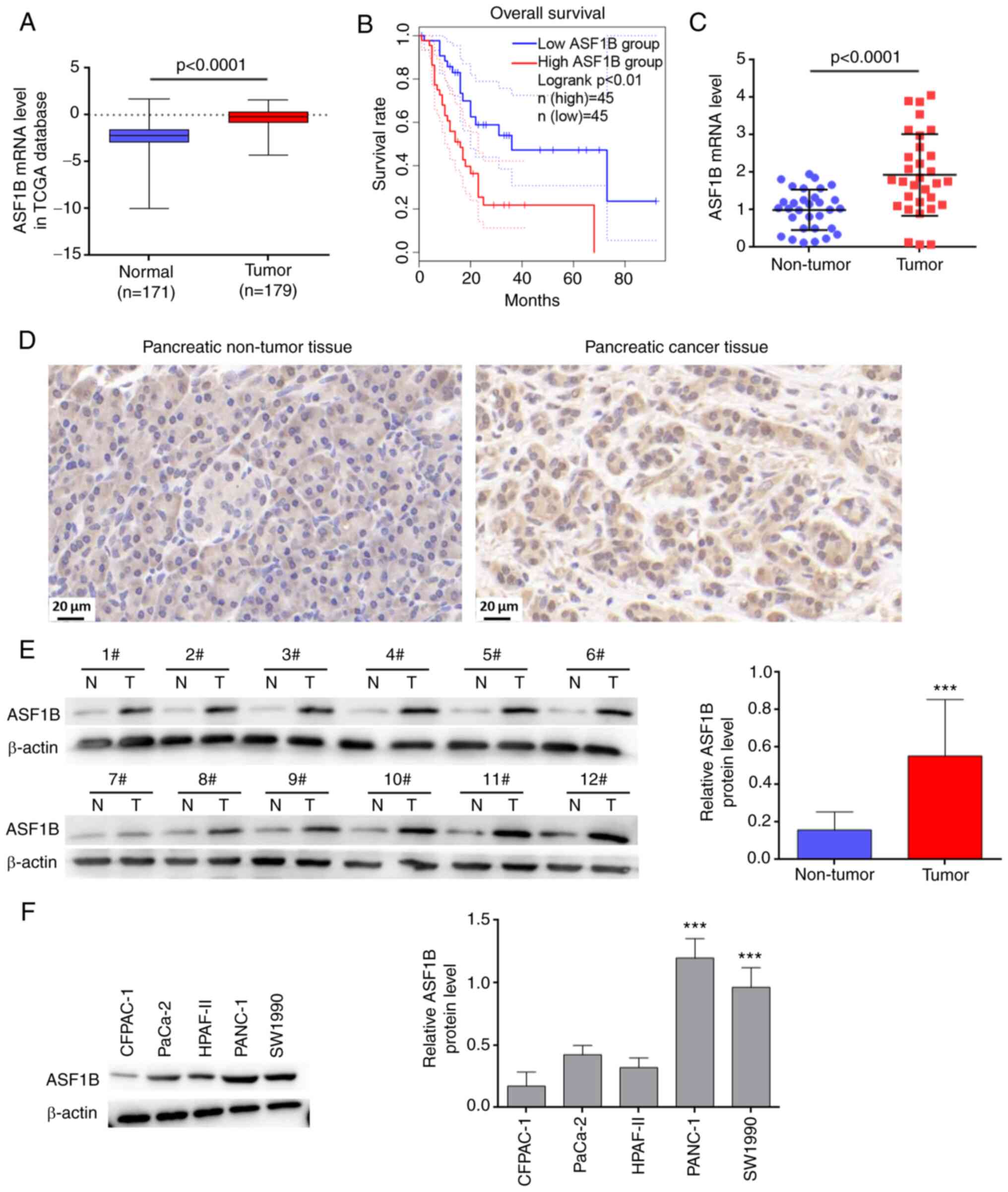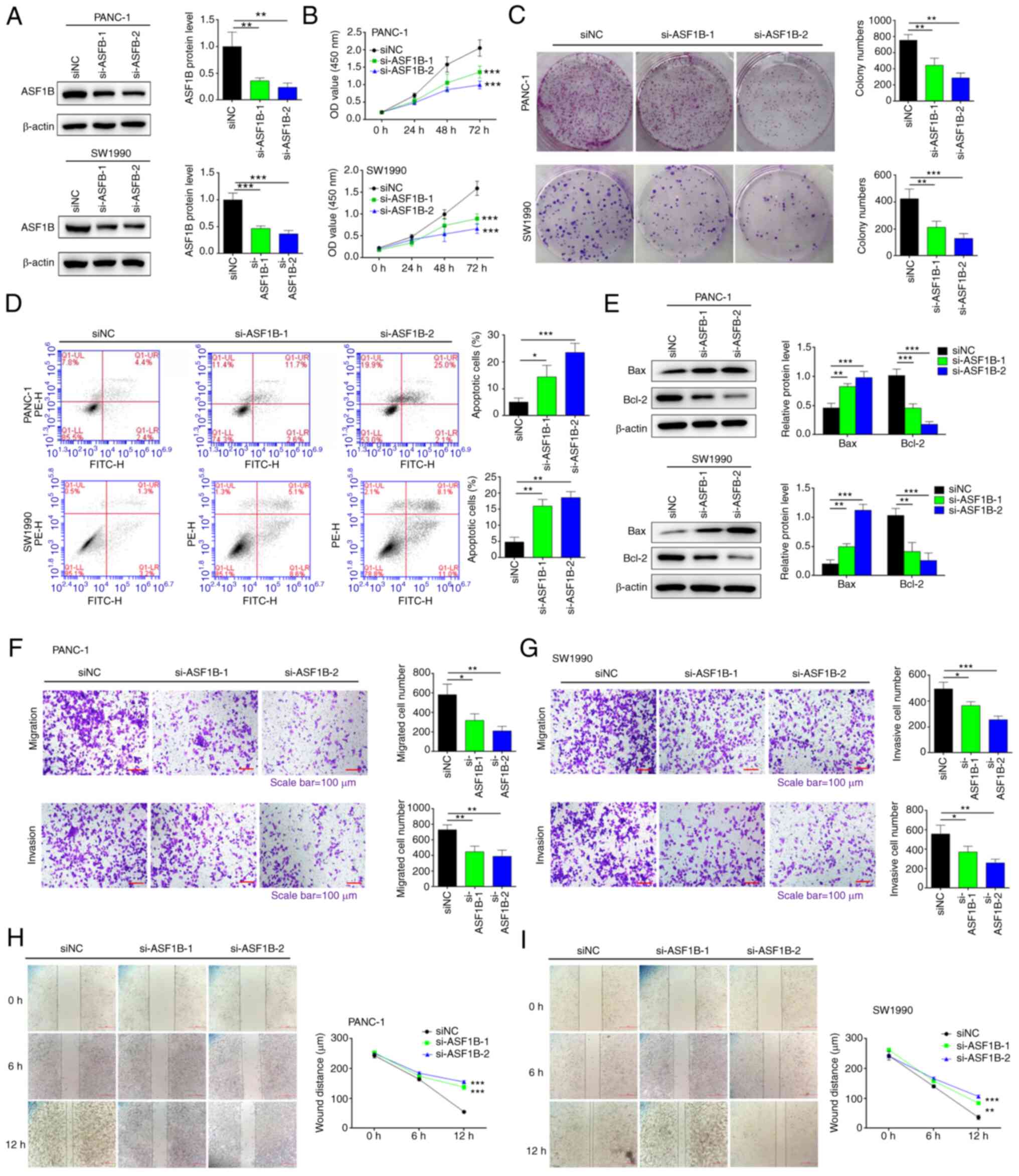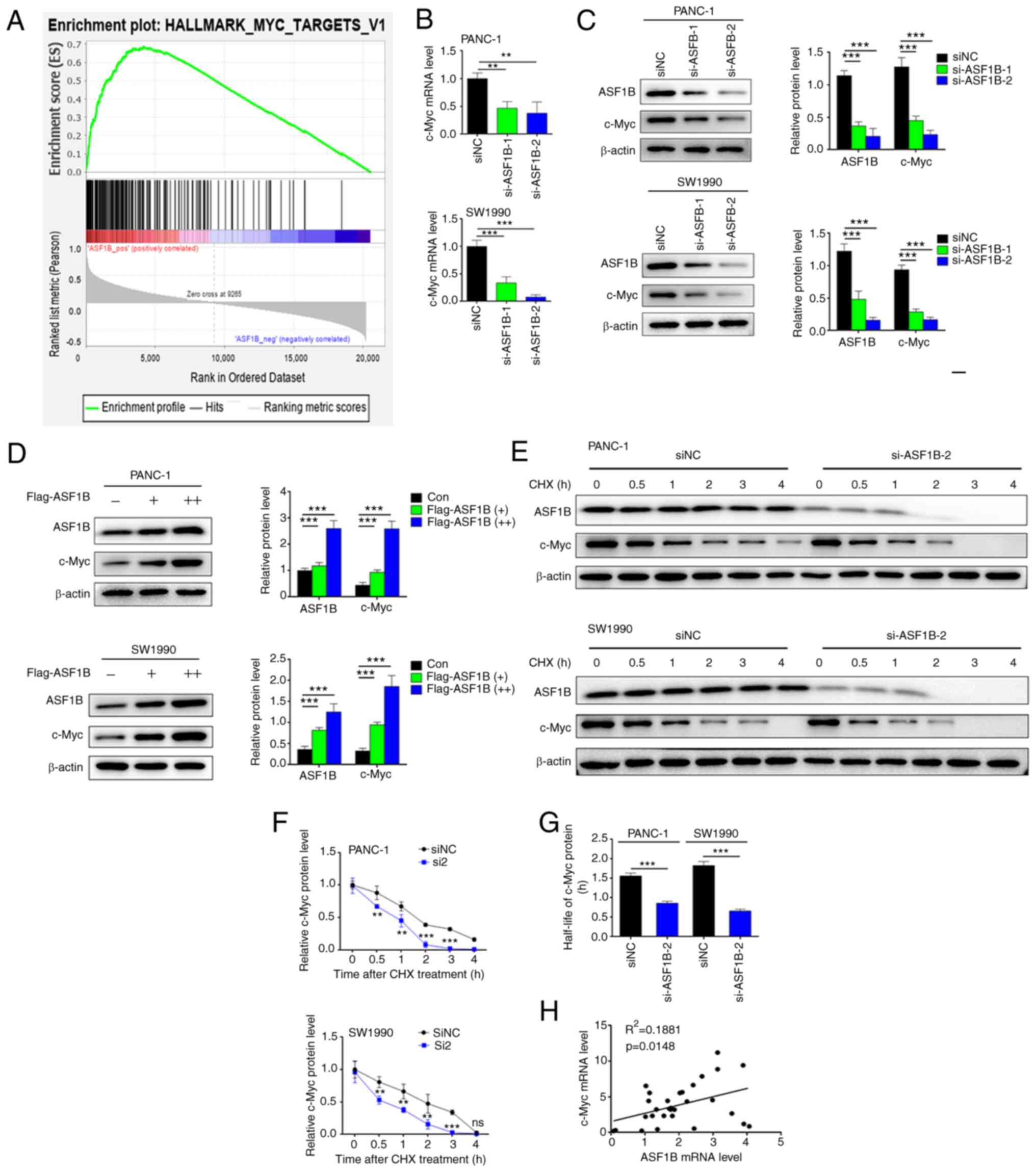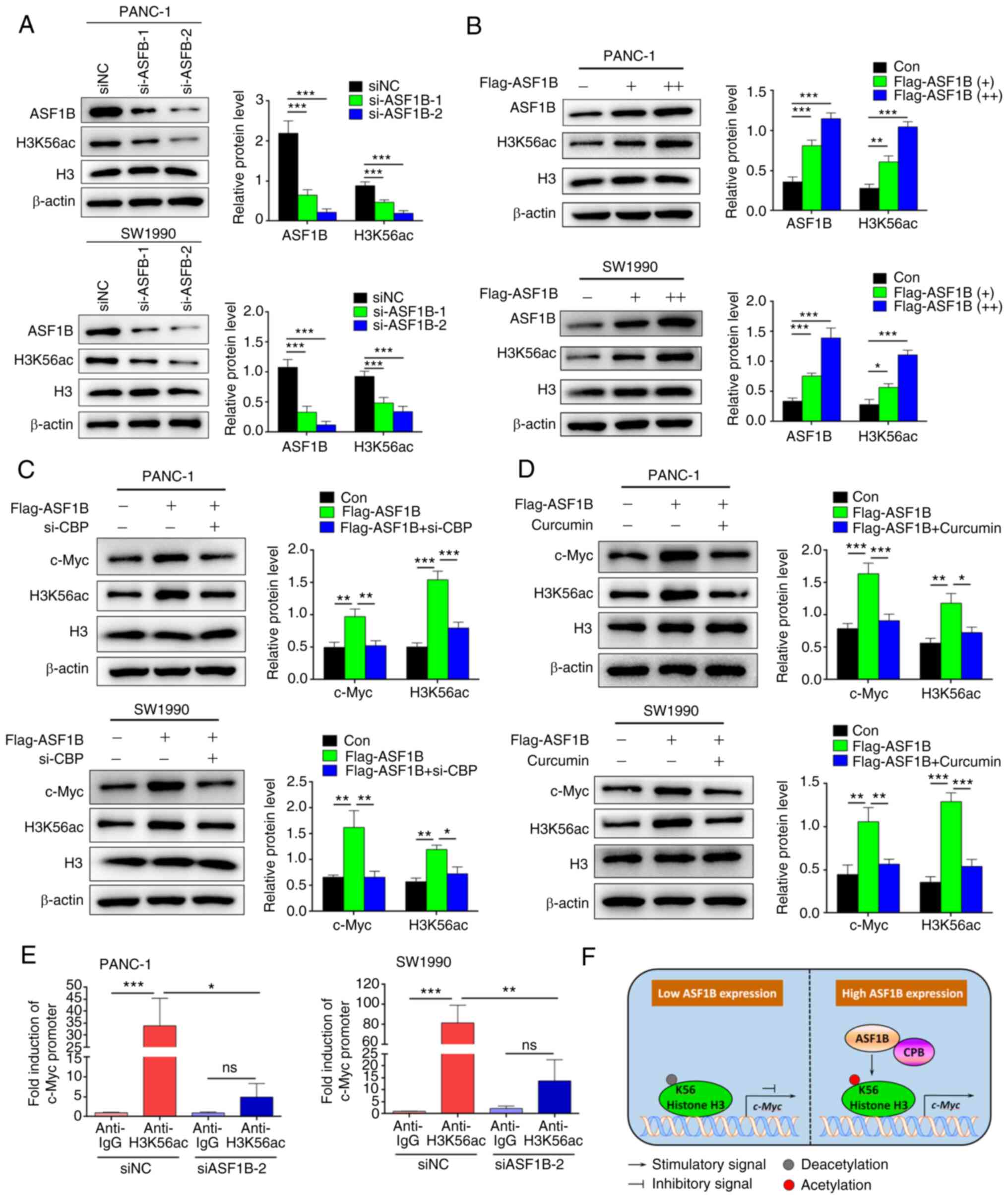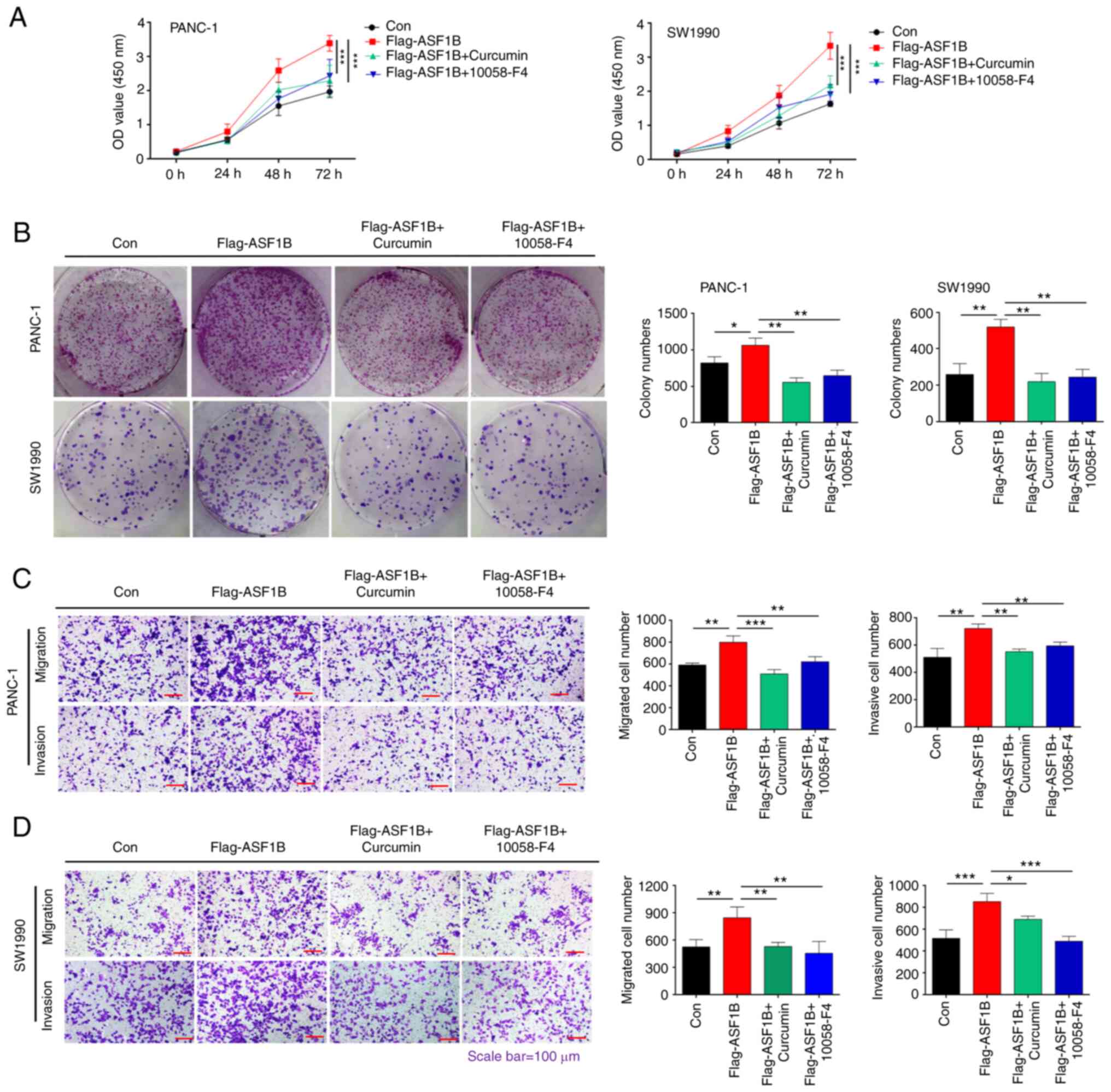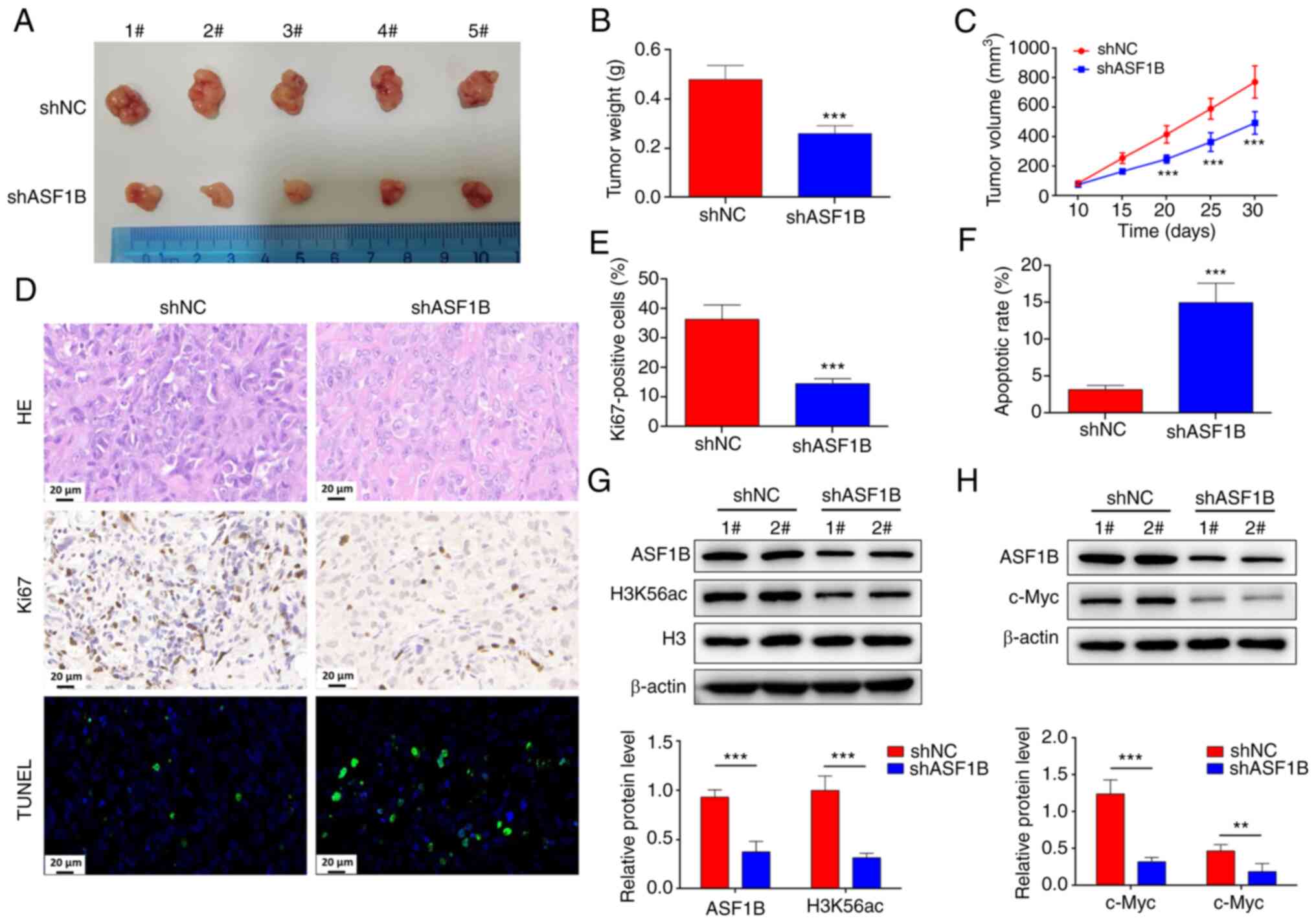|
1
|
Siegel RL, Miller KD and Jemal A: Cancer
statistics, 2019. CA Cancer J Clin. 69:7–34. 2019.
|
|
2
|
Kamisawa T, Wood LD, Itoi T and Takaori K:
Pancreatic cancer. Lancet. 388:73–85. 2016.
|
|
3
|
Kang MJ, Jang JY and Kim SW: Surgical
resection of pancreatic head cancer: What is the optimal extent of
surgery? Cancer Lett. 382:259–265. 2016.
|
|
4
|
Garrido-Laguna I and Hidalgo M: Pancreatic
cancer: From state-of-the-art treatments to promising novel
therapies. Nat Rev Clin Oncol. 12:319–334. 2015.
|
|
5
|
Giovannetti E, van der Borden CL, Frampton
AE, Ali A, Firuzi O and Peters GJ: Never let it go: Stopping key
mechanisms underlying metastasis to fight pancreatic cancer. Semin
Cancer Biol. 44:43–59. 2017.
|
|
6
|
Collisson EA, Bailey P, Chang DK and
Biankin AV: Molecular subtypes of pancreatic cancer. Nat Rev
Gastroenterol Hepatol. 16:207–220. 2019.
|
|
7
|
Ilic M and Ilic I: Epidemiology of
pancreatic cancer. World J Gastroenterol. 22:9694–9705. 2016.
|
|
8
|
Mousson F, Ochsenbein F and Mann C: The
histone chaperone Asf1 at the crossroads of chromatin and DNA
checkpoint pathways. Chromosoma. 116:79–93. 2007.
|
|
9
|
Cote JM, Kuo YM, Henry RA, Scherman H,
Krzizike DD and Andrews AJ: Two factor authentication: Asf1
mediates crosstalk between H3 K14 and K56 acetylation. Nucleic
Acids Res. 47:7380–7391. 2019.
|
|
10
|
Paul PK, Rabaglia ME, Wang CY, Stapleton
DS, Leng N, Kendziorski C, Lewis PW, Keller MP and Attie AD:
Histone chaperone ASF1B promotes human β-cell proliferation via
recruitment of histone H3.3. Cell Cycle. 15:3191–3202. 2016.
|
|
11
|
Han G, Zhang X, Liu P, Yu Q, Li Z, Yu Q
and Wei X: Knockdown of anti-silencing function 1B histone
chaperone induces cell apoptosis via repressing PI3K/Akt pathway in
prostate cancer. Int J Oncol. 53:2056–2066. 2018.
|
|
12
|
Corpet A, De Koning L, Toedling J,
Savignoni A, Berger F, Lemaître C, O'Sullivan RJ, Karlseder J,
Barillot E, Asselain B, et al: Asf1b, the necessary Asf1 isoform
for proliferation, is predictive of outcome in breast cancer. EMBO
J. 30:480–493. 2011.
|
|
13
|
Rosty C, Sheffer M, Tsafrir D, Stransky N,
Tsafrir I, Peter M, de Crémoux P, de La RA, Salmon R, Dorval T, et
al: Identification of a proliferation gene cluster associated with
HPV E6/E7 expression level and viral DNA load in invasive cervical
carcinoma. Oncogene. 24:7094–7104. 2005.
|
|
14
|
Kim JH, Youn Y, Lee JC, Kim J, Ryu JK and
Hwang JH: Downregulation of ASF1B inhibits tumor progression and
enhances efficacy of cisplatin in pancreatic cancer. Cancer
Biomark. 34:647–659. 2022.
|
|
15
|
Wang K, Hao Z, Fu X, Li W, Jiao A and Hua
X: Involvement of elevated ASF1B in the poor prognosis and
tumorigenesis in pancreatic cancer. Mol Cell Biochem.
477:1947–1957. 2022.
|
|
16
|
Thomas LR, Foshage AM, Weissmiller AM and
Tansey WP: The MYC-WDR5 nexus and cancer. Cancer Res. 75:4012–4015.
2015.
|
|
17
|
Pelengaris S and Khan M: The c-MYC
oncoprotein as a treatment target in cancer and other disorders of
cell growth. Expert Opin Ther Targets. 7:623–642. 2003.
|
|
18
|
Dang CV: MYC on the path to cancer. Cell.
149:22–35. 2012.
|
|
19
|
Hessmann E, Schneider G, Ellenrieder V and
Siveke JT: MYC in pancreatic cancer: Novel mechanistic insights and
their translation into therapeutic strategies. Oncogene.
35:1609–1618. 2016.
|
|
20
|
Wirth M, Mahboobi S, Kramer OH and
Schneider G: Concepts to target MYC in pancreatic cancer. Mol
Cancer Ther. 15:1792–1798. 2016.
|
|
21
|
Hogg SJ, Beavis PA, Dawson MA and
Johnstone RW: Targeting the epigenetic regulation of antitumour
immunity. Nat Rev Drug Discov. 19:776–800. 2020.
|
|
22
|
Chen Y, Hong T, Wang S, Mo J, Tian T and
Zhou X: Epigenetic modification of nucleic acids: From basic
studies to medical applications. Chem Soc Rev. 46:2844–2872.
2017.
|
|
23
|
Dawson MA and Kouzarides T: Cancer
epigenetics: From mechanism to therapy. Cell. 150:12–27. 2012.
|
|
24
|
Audia JE and Campbell RM: Histone
modifications and cancer. Cold Spring Harb Perspect Biol.
8:a0195212016.
|
|
25
|
Liu Z, Yang L, Sun Y, Xie X and Huang J:
ASF1a enhances antiviral immune response by associating with CBP to
mediate acetylation of H3K56 at the Ifnb promoter. Mol Immunol.
78:57–64. 2016.
|
|
26
|
Zhang L, Serra-Cardona A, Zhou H, Wang M,
Yang N, Zhang Z and Xu RM: Multisite substrate recognition in
asf1-dependent acetylation of histone H3 K56 by Rtt109. Cell.
174:818–830.e811. 2018.
|
|
27
|
Shaukat A, Khan MHF, Ahmad H, Umer Z and
Tariq M: Interplay between BALL and CREB binding protein maintains
H3K27 acetylation on active genes in drosophila. Front Cell Dev
Biol. 9:7408662021.
|
|
28
|
Das C, Lucia MS, Hansen KC and Tyler JK:
CBP/p300-mediated acetylation of histone H3 on lysine 56. Nature.
459:113–117. 2009.
|
|
29
|
Tang Z, Kang B, Li C, Chen T and Zhang Z:
GEPIA2: An enhanced web server for large-scale expression profiling
and interactive analysis. Nucleic Acids Res. 47:W556–W560.
2019.
|
|
30
|
Yu G, Wang LG, Han Y and He QY:
clusterProfiler: An R package for comparing biological themes among
gene clusters. OMICS. 16:284–287. 2012.
|
|
31
|
Livak KJ and Schmittgen TD: Analysis of
relative gene expression data using real-time quantitative PCR and
the 2(-Delta Delta C(T)) method. Methods. 25:402–408. 2001.
|
|
32
|
Siegel RL, Miller KD and Jemal A: Cancer
statistics, 2017. CA Cancer J Clin. 67:7–30. 2017.
|
|
33
|
Hu X, Zhu H, Zhang X, He X and Xu X:
Comprehensive analysis of pan-cancer reveals potential of ASF1B as
a prognostic and immunological biomarker. Cancer Med. 10:6897–6916.
2021.
|
|
34
|
Jiangqiao Z, Tao Q, Zhongbao C, Xiaoxiong
M, Long Z, Jilin Z and Tianyu W: Anti-silencing function 1B histone
chaperone promotes cell proliferation and migration via activation
of the AKT pathway in clear cell renal cell carcinoma. Biochem
Biophys Res Commun. 511:165–172. 2019.
|
|
35
|
Jin X, Fang R, Fan P, Zeng L, Zhang B, Lu
X and Liu T: PES1 promotes BET inhibitors resistance and cells
proliferation through increasing c-Myc expression in pancreatic
cancer. J Exp Clin Cancer Res. 38:4632019.
|
|
36
|
Jensen MB, Lawaetz JG, Andersson AM,
Petersen JH, Nordkap L, Bang AK, Ekbom P, Joensen UN, Prætorius L,
Lundstrøm P, et al: Vitamin D deficiency and low ionized calcium
are linked with semen quality and sex steroid levels in infertile
men. Hum Reprod. 31:1875–1885. 2016.
|
|
37
|
Richart L, Carrillo-de Santa Pau E,
Rio-Machin A, de Andrés MP, Cigudosa JC, Lobo VJ and Real FX: BPTF
is required for c-MYC transcriptional activity and in vivo
tumorigenesis. Nat Commun. 7:101532016.
|
|
38
|
Guo J, Hao J, Jiang H, Jin J, Wu H, Jin Z
and Li Z: Proteasome activator subunit 3 promotes pancreatic cancer
growth via c-Myc-glycolysis signaling axis. Cancer Lett.
386:161–167. 2017.
|
|
39
|
Muthalagu N, Monteverde T,
Raffo-Iraolagoitia X, Wiesheu R, Whyte D, Hedley A, Laing S,
Kruspig B, Upstill-Goddard R, Shaw R, et al: Repression of the type
I interferon pathway underlies MYC- and KRAS-dependent evasion of
NK and B cells in pancreatic ductal adenocarcinoma. Cancer Discov.
10:872–887. 2020.
|
|
40
|
Okugawa Y, Grady WM and Goel A: Epigenetic
alterations in colorectal cancer: Emerging biomarkers.
Gastroenterology. 149:1204–1225.e1212. 2015.
|
|
41
|
Benton CB, Fiskus W and Bhalla KN:
Targeting histone acetylation: Readers and writers in leukemia and
cancer. Cancer J. 23:286–291. 2017.
|
|
42
|
Wu HT, Kuo YC, Hung JJ, Huang CH, Chen WY,
Chou TY, Chen Y, Chen YJ, Chen YJ, Cheng WC, et al:
K63-polyubiquitinated HAUSP deubiquitinates HIF-1alpha and dictates
H3K56 acetylation promoting hypoxia-induced tumour progression. Nat
Commun. 7:136442016.
|
|
43
|
Vadla R and Haldar D: Mammalian target of
rapamycin complex 2 (mTORC2) controls glycolytic gene expression by
regulating histone H3 Lysine 56 acetylation. Cell Cycle.
17:110–123. 2018.
|
|
44
|
Skalska L, Stojnic R, Li J, Fischer B,
Cerda-Moya G, Sakai H, Tajbakhsh S, Russell S, Adryan B and Bray
SJ: Chromatin signatures at Notch-regulated enhancers reveal
large-scale changes in H3K56ac upon activation. EMBO J.
34:1889–1904. 2015.
|
|
45
|
Weng M, Yang Y, Feng H, Pan Z, Shen WH,
Zhu Y and Dong A: Histone chaperone ASF1 is involved in gene
transcription activation in response to heat stress in Arabidopsis
thaliana. Plant Cell Environ. 37:2128–2138. 2014.
|
|
46
|
Han J, Zhou H, Li Z, Xu RM and Zhang Z:
Acetylation of lysine 56 of histone H3 catalyzed by RTT109 and
regulated by ASF1 is required for replisome integrity. J Biol Chem.
282:28587–28596. 2007.
|
|
47
|
Sebastián C, Zwaans BM, Silberman DM,
Gymrek M, Goren A, Zhong L, Ram O, Truelove J, Guimaraes AR, Toiber
D, et al: The histone deacetylase SIRT6 is a tumor suppressor that
controls cancer metabolism. Cell. 151:1185–1199. 2012.
|
|
48
|
Cai J, Zuo Y, Wang T, Cao Y, Cai R, Chen
FL, Cheng J and Mu J: A crucial role of SUMOylation in modulating
Sirt6 deacetylation of H3 at lysine 56 and its tumor suppressive
activity. Oncogene. 35:4949–4956. 2016.
|















